ChatGPT for E-Commerce: Product Research & Branding

ChatGPT holds immense promise for the world of e-commerce. With its extraordinary capabilities, it can bring a wave of transformation to the industry. From conducting in-depth market research, optimizing inventory management, providing personalized shopping assistance, order management, buying guides, sentiment analysis, tracking support, and enhanced logistics to much more, ChatGPT offers unparalleled possibilities.
In this article, we delve into real-life case studies that showcase how e-commerce experts are utilizing ChatGPT to enhance processes involved in e-commerce operations. We will cover the ChatGPT prompts used during the process to provide you a hands-on approach. Let’s take a look.
Nick’s Method
Meet Nick, an e-commerce specialist who embarked on his entrepreneurial journey by selling on Amazon. Starting his first Amazon Fulfillment by Amazon (FBA) business in 2015 with ebusinessboss, he swiftly built a six-figure enterprise within just 12 months. Recognizing the significance of diversification, Nick aimed to expand beyond Amazon's platform. In this instance, he shares his insights on leveraging ChatGPT to identify lucrative products, define target audiences, and establish brand guidelines.
Step 1: Identifying the Product Segment
Embarking on his e-commerce journey, Nick begins by exploring a niche market. His focus is on the US geography, aiming to identify products that cater to hobbies that are relatively less popular. By entering a less crowded market, Nick seeks to capitalize on untapped opportunities and carve a unique space for his business.
Give me 5 interesting hobbies in the US that are popular but not many people know about them
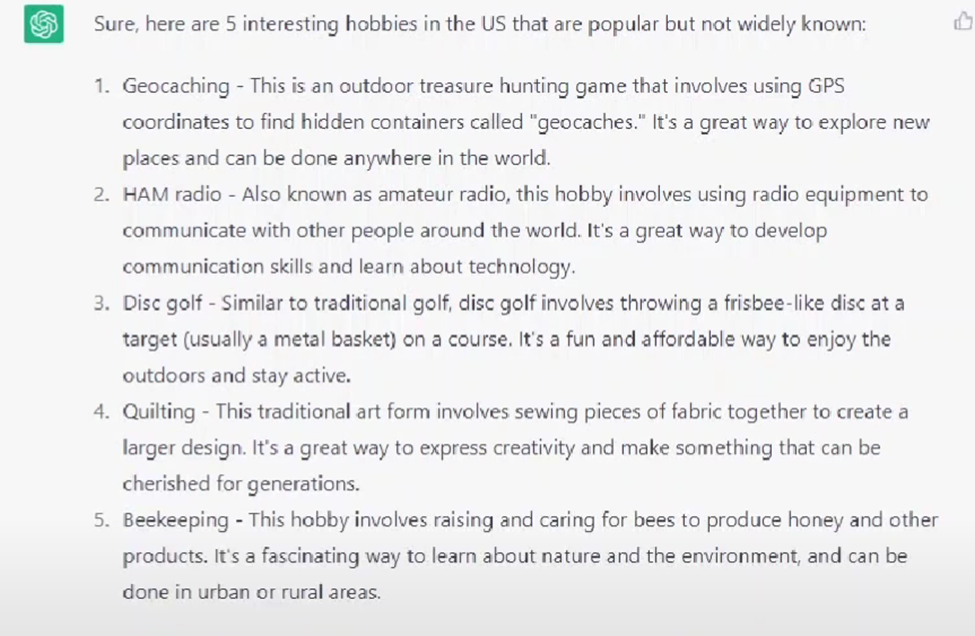
Step 2: Tapping Product Ideas in Product Accessories Segment
Nick's careful consideration leads him to choose "Disc Golf" as the hobby to illustrate this example. Recognizing the challenges that come with selling electronic items on an e-commerce platform like Amazon, especially for first-timers, he opts for a more familiar and manageable product category. Having experience in selling similar items on Amazon, Nick sees the potential for success in the disc golf market. Moving forward, he advises aspiring entrepreneurs to explore accessories that complement the chosen product, as these can offer good revenue streams and cater to the needs of enthusiasts. With this prompt, Nick sets the stage for a comprehensive exploration of the disc golf niche and its associated accessories.
Give me 5 popular accessories needed for disc golf
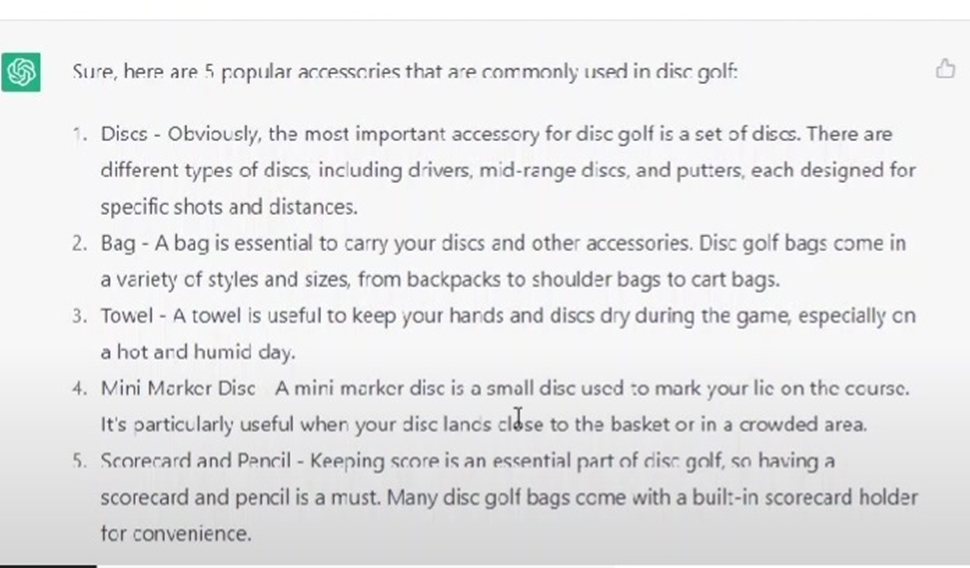
Step 3: Complement Product Research with eCommerce Analytics Tools
While ChatGPT provides valuable inputs, Nick believes in leveraging real-time analytics for a comprehensive approach. He recommends utilizing Helium10 alongside market research for Amazon product analysis. Using a Chrome plugin, he gains insights directly from the Amazon website. Nick begins by searching for "disc golf" and narrows down to the keyword "disc golf retriever" based on its monthly search volume of over 2,500 and an increasing trend. By employing Helium10, he identifies a product with high monthly revenue exceeding $20,000 and low review count of around 700. Confident in his selection, Nick now focuses on enhancing the chosen product for better customer satisfaction, turning to ChatGPT for further guidance.
Currently what are customers biggest complaints about using a disk golf retriever
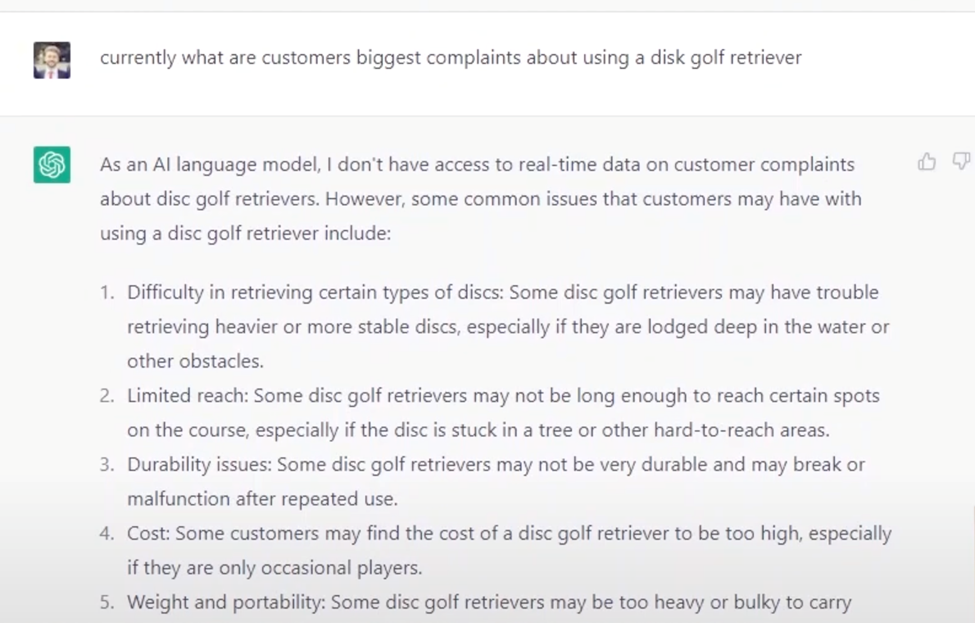
Moreover, Nick suggests that a detailed understanding of these issues can be obtained by leveraging real-time reviews. He proposes two methods: utilizing Helium10 to export customer review data or manually copying and pasting reviews from the Amazon website. Once gathered, Nick recommends selecting and analyzing 1-3 star reviews, using ChatGPT to derive valuable insights from the data. This approach ensures that the insights gained are driven by up-to-date information, enabling you to make informed decisions based on real-time feedback.
Based on the aforementioned inputs, Nick hones in on two critical aspects: limited reach and durability issues. He advises that when engaging with product suppliers to source items, it is vital to discuss the possibility of customizing the product to address these specific concerns. By doing so, you can create a superior product that stands out from competitors in the market.
Step 4: Determine Target Audience Interests
To write a compelling product description, Nick suggests that it is crucial to understand what motivates the target audience. By exploring customer needs and desires, Nick can craft product descriptions that deeply resonate with his target audience. In this regard, he utilizes ChatGPT to gather valuable insights.
What are the benefits of disc golf why do people play it

Step 5: Determine Brand Name Aligned with Customer Preferences
Considering physical fitness and socialization as key benefits, Nick prompts ChatGPT to generate brand name ideas.
Give me brand name ideas for a disc golf brand that focused on the benefits of physical fitness and socialization
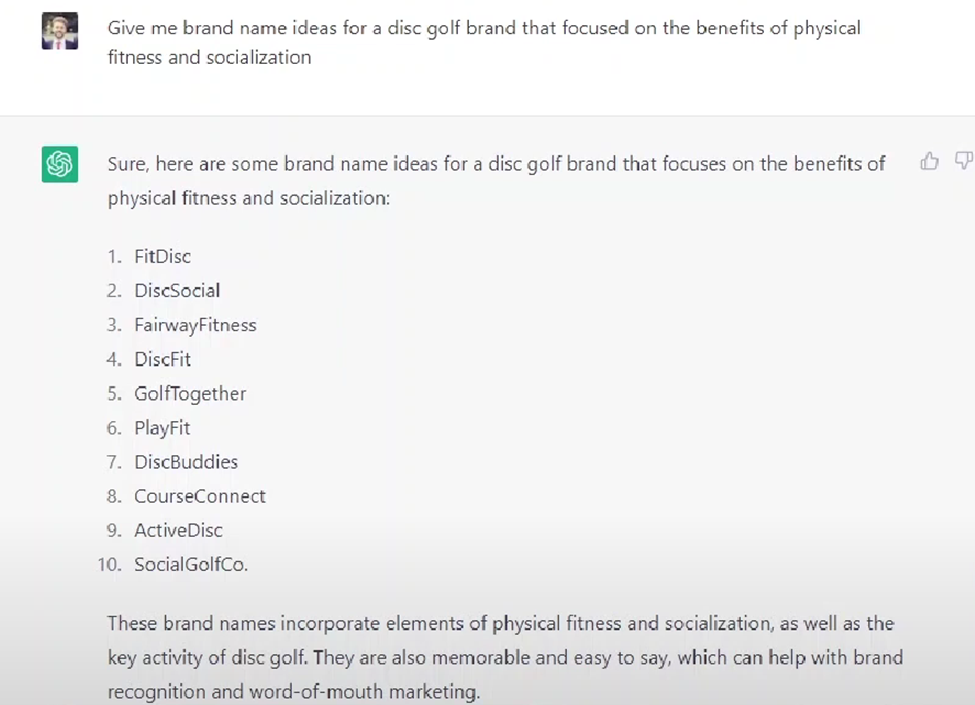
He suggests that before finalizing a brand name, it is important to check if it is not copyrighted to avoid any legal issues.
Step 6: Determine Brand Colors Aligned with Customer Preferences
In order to differentia the product, Nick wants to choose brand colors that would resonate with his target audience. He seeks inputs from ChatGPT.
What colors would be best for my brand, I want to appeal to people that like disc golf
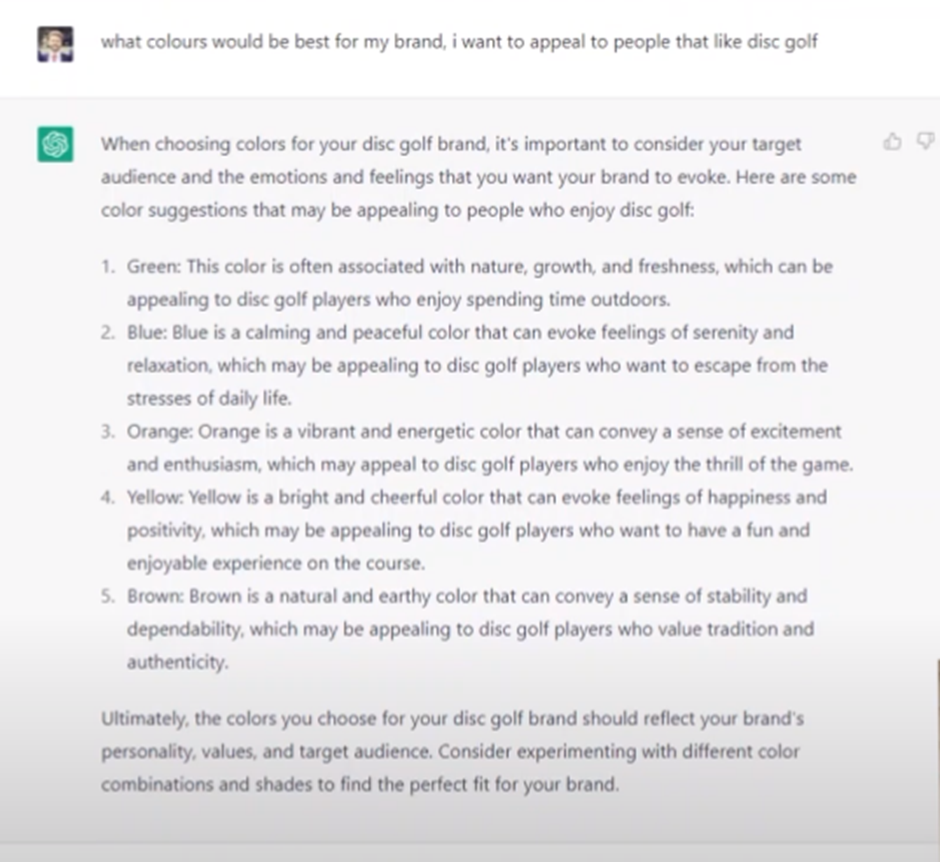
Nick consciously avoids using the color green to prevent the product from getting lost in the grass, and he also avoids using blue, which happens to be the color of his competitor's product. After careful consideration, Nick decides to narrow down his brand color to orange. He recognizes that orange resonates well with disc golf players and will help his product stand out in the market.
In this example, Nick showcased his methodology for selecting a product, addressing crucial pain points when launching an Amazon FBA business, and branding it to align with customer preferences. For an in-depth understanding of Nick's approach, you can watch his video here. Additionally, you can explore his YouTube channel for a wealth of resources and insights related to Amazon FBA.
Tan’s Method
Tan Chowdhury, a 25-year-old entrepreneur, works in the Shopify dropshipping arena, with a YouTube channel boasting 200,000+ subscribers. He offers the E-Com Mastery Program, a renowned dropshipping course for aspiring online store owners.in this example, he demonstrates how ChatGPT can be used to build a dropshipping business from identifying a product, generating logo, sales copy to ads.
Step 1: Choosing A Product
Tan initially prompts ChatGPT to suggest products suitable for dropshipping. However, he discovers that the outcomes are excessively generic and fail to provide satisfactory results aligned with his own dropshipping business experience. Here is an example of the initial result he received:
When he requests ChatGPT to recommend a particular product, it provides guidance on the approach to follow but doesn't offer much assistance in actually selecting the product. Consequently, he endeavors to refine ChatGPT's focus by presenting the subsequent prompt
Can you give me specific products in these niches to sell?

Tan acknowledges that ChatGPT's ability to identify specific products is limited and often yields generic results. In an attempt to overcome this limitation, he modifies his prompt to provide more specific information and guidance to ChatGPT.
If you were to pick one product, which product would it be?

Recognizing ChatGPT's limitations in suggesting products without additional context, Tan relied on his own expertise to identify three products. Drawing from his experience in running a successful dropshipping business, he carefully selected these products using his own judgment.
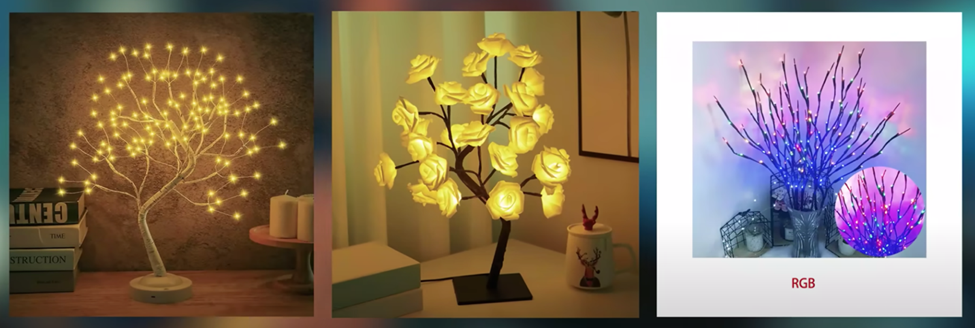
Following that, Tan requested ChatGPT to suggest products within the aforementioned three categories and subsequently choose one from the suggestions.
Pick one of these
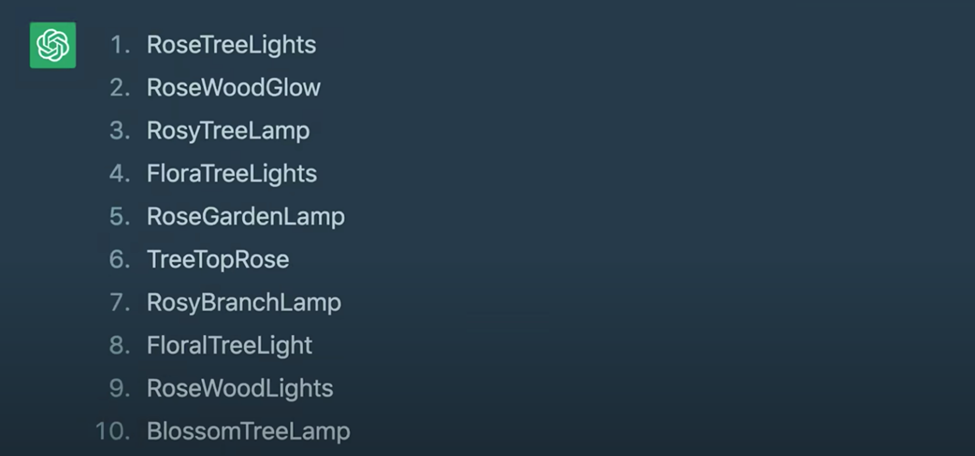
ChatGPT surprised Tan with its recommendation of the rose lamp product. Given that there were approximately 35 days remaining until Valentine's Day, Tan was astonished by its potential for generating sales during this period. He believed it could be a lucrative choice based on the sales opportunity presented before Valentine's Day.
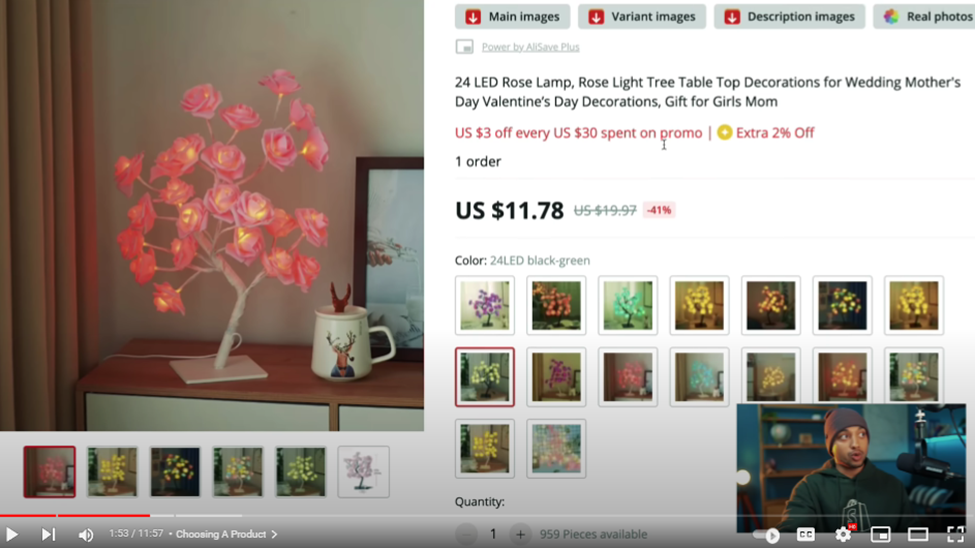
Step 2: Choosing A Brand Name
Tan requests ChatGPT to suggest brand names for the product.
Can you come up with 10 clever brandnames for a company that sells rose tree.
He refines the result by providing the following additional prompt.
Come up with 10 more incorporating the tree aspect

After sharing around 10 options, Tan once again prompts ChatGPT to autonomously select one of the options. Surprisingly, the option that ChatGPT suggests is already available on platforms like GoDaddy.

Choosing your brand’s name and finding a domain for the same can be a tedious exercise. Tan in his tutorial shares that being in the business for a longer period of time he has sometimes spent hours with his friends and colleagues in just brainstorming the right name for the brand.
Step 3: Creating A Logo
Tan provides a brief to ChatGPT on brand name and its purpose. And, request ChatGPT to generate logo description.
Can you create a description for a modern logo for a brand called “rosetreelamp” the brand is celebrating love and is a present for valentines day

Logo Creation:
The result came out were quite descriptive. He took inspiration from the description and wrote a Midjourney prompt as follows:
A logo for a brand called “roselamp” that is elegant, modern, stylized, warm, inviting, romantic, sleek, contemporary, beautiful

He utilized the image results from Midjourney and the description generated by ChatGPT to provide guidance to a freelance designer on Fiverr for designing the logo. This approach enabled him to establish specific requirements for hiring a logo designer and have a clear expectation of the final output. Additionally, he found that the output from Midjourney lacked the necessary clarity to be used directly as a logo.
In this example, Tan showcases his utilization of ChatGPT for product selection, brand name generation, and logo design. He emphasizes the significance of incorporating context and actual information to obtain high-quality output. Tan in this video also further explores the realms of copywriting, ad scripts, and setting up a Shopify store. To delve deeper into his experiences, watch his complete video here.
Conclusion
In this article, we examined two distinct approaches to conducting product research and development for online businesses. We invite you to share your thoughts on these methods, which one you find preferable, and the reasons behind your choice. Additionally, we welcome your suggestions on how ChatGPT can be utilized to enhance e-commerce operations more effectively.
We have also covered a previous article on user experience research. To read more, click here.